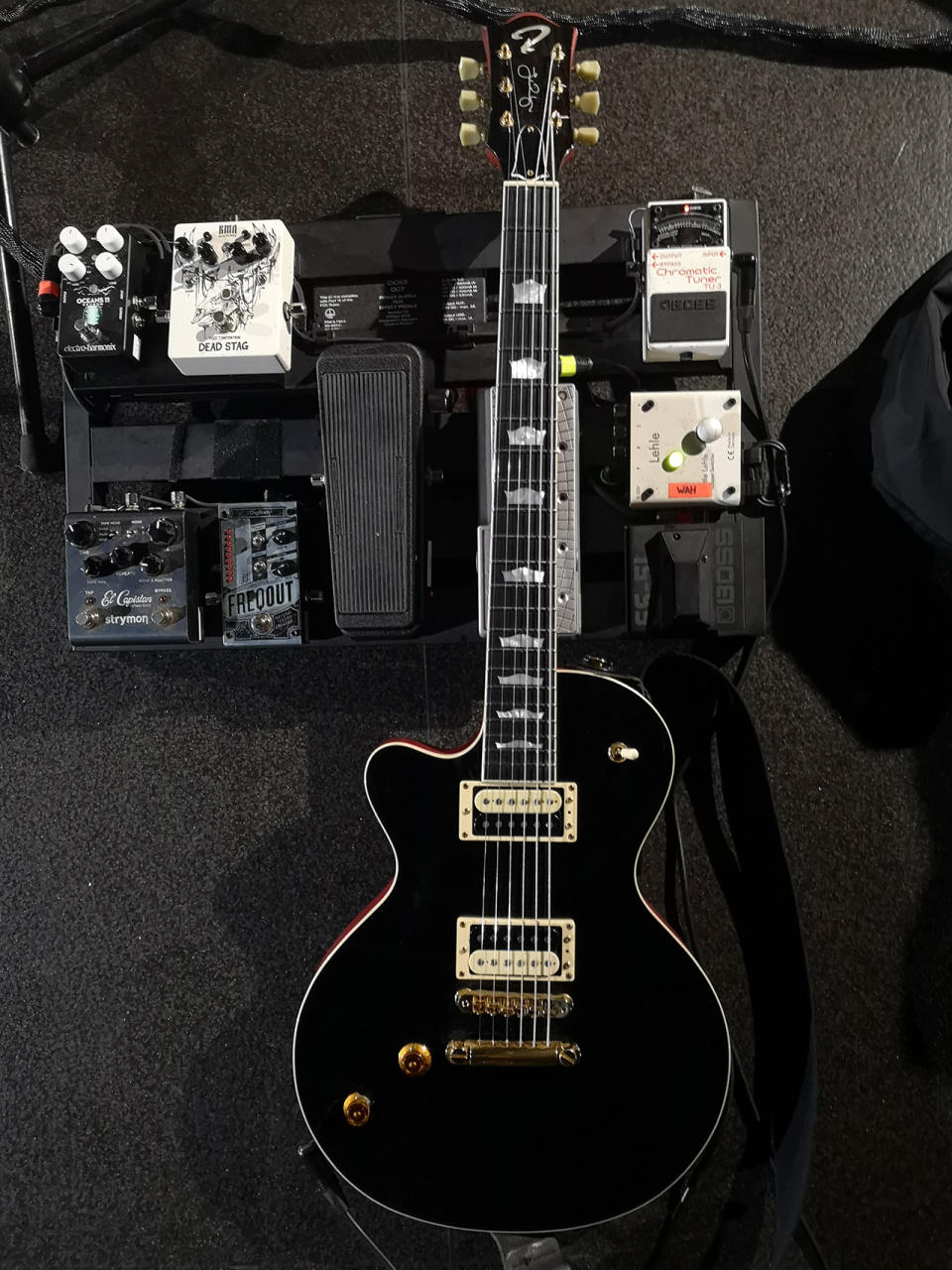Why a baritone Les Paul is the perfect prog metal weapon for Wheel’s James Lascelles

In a progressive metal scene where players are quick to grab extended-range guitars, Wheel’s James Lascelles is flying the flag for vintage Les Pauls. “When you dig in, it feels very specific for that instrument,” he says. “Metal guitars have more bite, but they lose some of the meat on the attack. Les Pauls have quite a small attack but it's very meaty – there’s a big chunk of tonal range there.”
His strongest argument for chunk over bite is heard on the band’s third album, Charismatic Leaders. Tonally, there’s greater depth of character to the guitars than ever before, and the Unicorn – his custom LP build from Finnish luthier Ruokangas – sits at the forefront.
“The core goal of the guitar design was to mirror a ‘50s Les Paul as accurately as possible, but the wood’s a little bit different,” Lascelles says. “Instead of a mahogany body with a maple top, they use a Spanish cedar body, like you have on classical guitars, with an arctic birch top. The tone print of those two woods together is amazing.
“The pickups are from a German company called Häussel; I asked for the best Les Paul-sounding pickups they had. I think they’re the stock option for these guitars, but they sound perfect.”
One final tweak from the Les Paul template completes the build. “I ride the volume pot a lot when I’m playing, so I’ve got that just at the bottom of the bridge,” he explains. “And I’ve only got one tone pot rather than two.”
While the allure of more strings hasn’t got to him yet, Lascelles hasn’t resisted the seduction of low tunings – which saw him approach Ruokangas for a custom, LP-styled baritone. “It’s tuned to drop G, which is so fucking low for me it’s unbelievable,” he says. “It feels really good to play and its tone is so warm; it has so little fat and it’s really dark.”
The instrument inspired their latest single, Porcelain. Though it’s a shadowy, snaking song, there’s a deep blooming resonance oozing from the guitar’s core. “That song’s all about the baritone,” Lascelles says.
“I’d just got the guitar; it was a beautiful Finnish sunset and I plugged in and jammed with some reverby tones for about half an hour. Normally, when I’m writing, I spend a lot of time thinking about how A connects to B. With this, I just played and chopped it up afterward.
“I've never approached a song like that before. But it felt less scary because it was a new instrument too; it felt okay to experiment. I’m determined to write more songs with it in the future.”
I pair the Unicorn with my actual Les Paul… there’s a real end-of-the-world feeling to that combination
Two other Ruokangas models shine on the new record. The Vsop and Mojo are the firm’s homage to Strats and Teles, and their single-coil bite counters the thickness of his Les Pauls.
“I’ve been putting those single coils in really unexpected places on the record,” says Lascelles. “The rhythm guitars on Empire pair the Unicorn with the Vsop, which is going through producer Fredrik Thordendal’s Marshall JCM800, played on the bridge pickup.
“I did a similar thing with Submission and the Telecaster. Whenever I wanted a super-dense, black hole kind of sound, I’d pair the Unicorn with my actual Les Paul. There’s a real end-of-the-world feeling to that combination.”

His shunning of contemporary gear runs into his live rig too. Though he owns a Quad Cortex, he still loves the feel of a proper amp and a pedalboard sculpted to his specifications.
“I play better through an amp,” he insists. “I get more excited and it feels better in the hands. So live, I’m using my Victory V130. I love the simplicity – it has seven controls, including a three-band EQ, and it has a really vulnerable feeling sound clean tone.”
Pedal-wise, he’s a sucker for the “long tails and dark delays” of the Keeley Chorus Seaform Plus. KMA Machines’ Dead Stag is his “one-size-fits-all fuzz solution” – its aggressive EQ allows him to sculpt nasally tones for intros to contrast the balls of his Les Paul when the song kicks in.
Instead of employing his MXR Phase 90 for whole sections, he uses it to accent breaks in their music’s maelstroms, lifting his guitars out from the background.
Away from aggression, he immerses himself in the ambiance of Strymon’s El Capistan delay. “I can’t find anything that competes,” he says. “The color of it is perfect, so I just freestyle that live, riding the tap tempo function with my left foot constantly.”
Charismatic Leaders is out on May 3 via InsideOut Music / Century Media Records.

